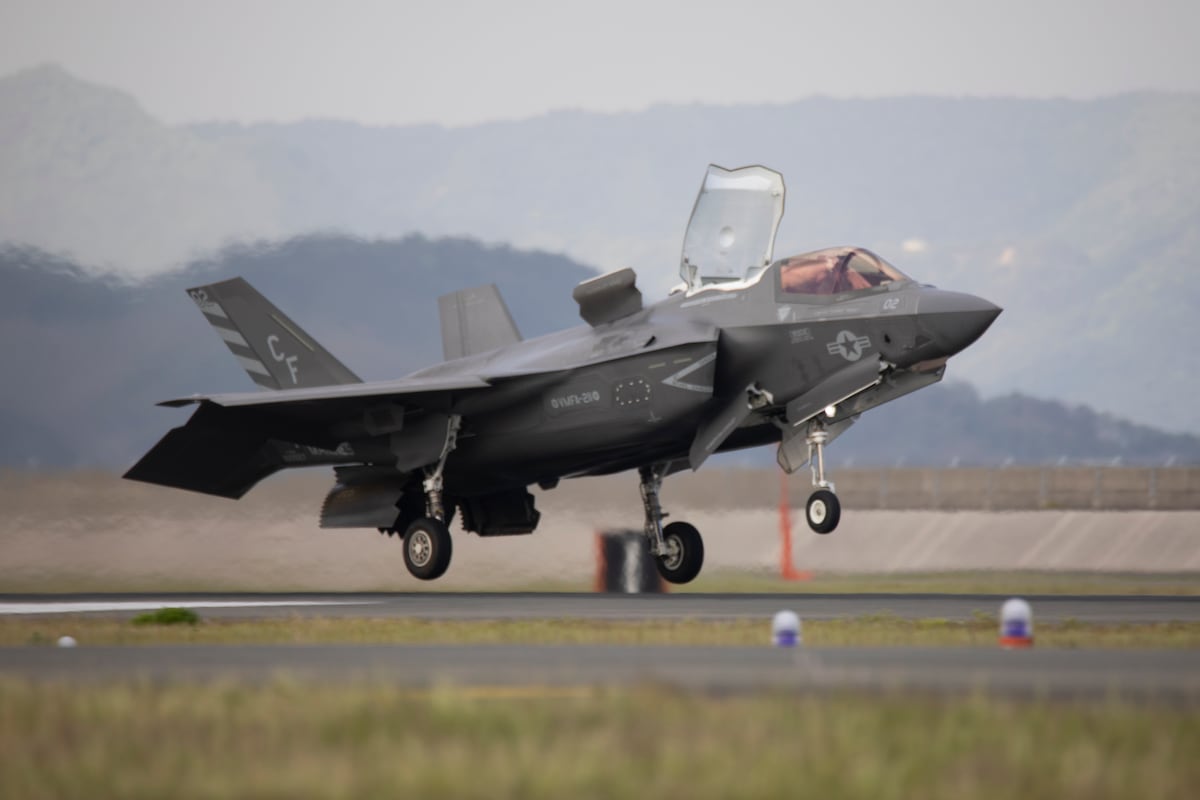A Marine fighter attack squadron recently deployed to Japan, joining three other squadrons in an effort to support operations in the Indo-Pacific, according to a release from the 1st Marine Aircraft Wing.
Marine Fighter Attack Squadron, or VMFA-211 — an F-35B Lightning II squadron hailing from Yuma, Arizona — arrived at Marine Corps Air Station Iwakuni, Japan, on Saturday.
The newest additions, also known as the “Wake Island Avengers,” will fold into Marine Aircraft Group 12, 1st Marine Aircraft Wing, to assist with deployments in the region.
“The squadron joins VMFA-121 and VMFA-242, MAG-12’s two permanently stationed F-35B squadrons, alongside VMFA-214, another U.S.-based UDP [Unit Deployment Program] squadron, to enhance our ability to support III Marine Expeditionary Force and joint force operations across the Indo-Pacific,” a 1st Marine Aircraft Wing spokesperson said in a statement.
RELATED
While the unit declined to list the exact number of aircraft and service members deployed to Japan along with VMFA-211, a spokesperson told Military Times a typical F-35B squadron includes 10 aircraft and enough personnel to operate and maintain the fighters.
The exact dates of deployment were also not revealed, but the 1st Aircraft Wing acknowledged deployments usually last six months.
VMFA-211 squadron will participate in exercises in support of the 1st Marine Aircraft Wing, the spokesperson confirmed.
Recently, VMFA-214 participated in Freedom Flag 25-1, a joint exercise between the U.S. and Korea held in April at Gwangju Air Base, Korea.
“These exercises, in turn, will ensure the Marine Corps is operationally ready and postured to support U.S.-Japan Treaty of Mutual Cooperation and Security,” the spokesperson said.
Marine Aircraft Group 12 — along with the now four Marine fighter attack squadrons — includes Marine Aerial Refueler Transport Squadron 152, Marine Wing Support Squadron 171 and Marine Aviation Logistics Squadron 12.
Riley Ceder is a reporter at Military Times, where he covers breaking news, criminal justice, investigations, and cyber. He previously worked as an investigative practicum student at The Washington Post, where he contributed to the Abused by the Badge investigation.
Read the full article here








